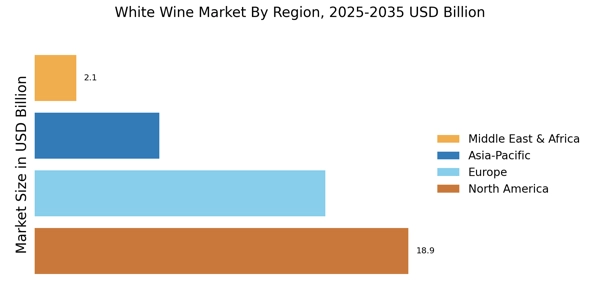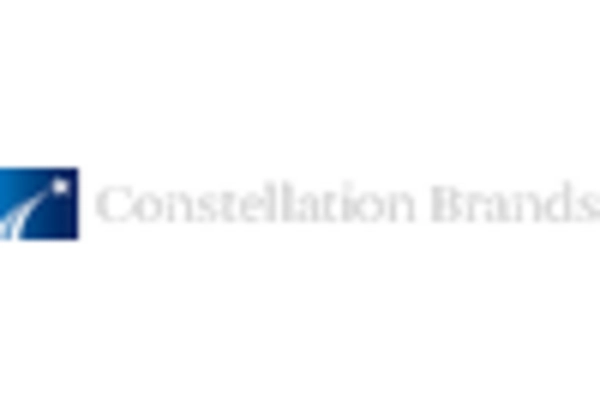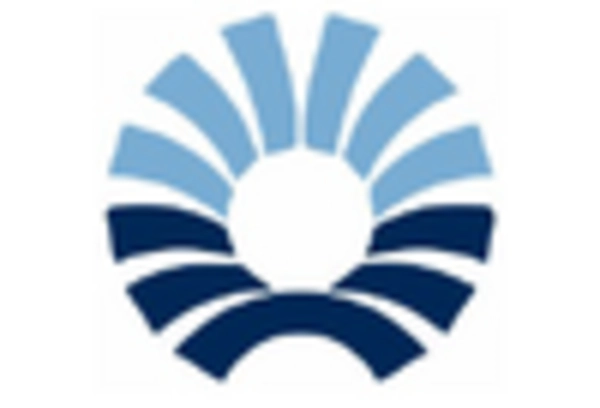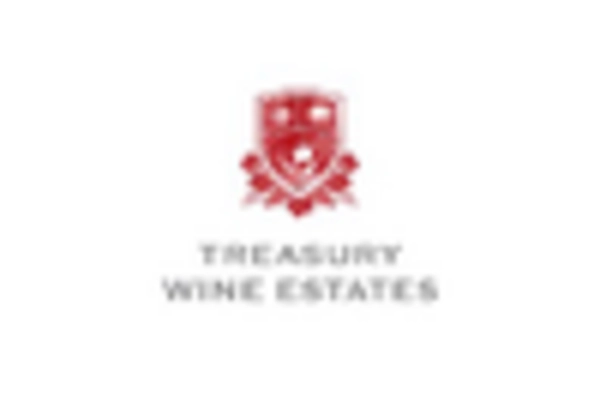Culinary Trends and Food Pairing
The White Wine Market is significantly influenced by evolving culinary trends and the increasing popularity of food pairing. As consumers become more adventurous in their dining experiences, they are seeking wines that complement their meals. White wines, known for their versatility, are often chosen for pairing with a variety of cuisines, from seafood to spicy dishes. This trend is supported by the rise of food and wine pairing events, which educate consumers on the nuances of flavor combinations. As culinary exploration continues to grow, the White Wine Market is likely to see an uptick in demand for specific varietals that align with contemporary dining trends, thereby enhancing the overall market landscape.
E-commerce Growth and Wine Sales
The White Wine Market is witnessing a transformative shift due to the rapid growth of e-commerce platforms. As consumers increasingly turn to online shopping for convenience, wine retailers are adapting their strategies to meet this demand. Recent statistics reveal that online wine sales have surged, with a growth rate of approximately 15% year-over-year. This trend is particularly beneficial for the White Wine Market, as it allows for a wider reach and accessibility to diverse consumer segments. Furthermore, the rise of subscription services and direct-to-consumer sales models is reshaping the purchasing landscape, enabling consumers to explore various white wine options from the comfort of their homes. This shift towards digital channels is likely to continue influencing the market dynamics in the coming years.
Health Consciousness and Wine Consumption
In recent years, there has been a marked increase in health consciousness among consumers, which has had a profound impact on the White Wine Market. Many individuals are now seeking wines that are lower in calories and sugar, aligning with their wellness goals. This trend is reflected in the growing demand for organic and low-alcohol white wines, which are perceived as healthier alternatives. Data indicates that the market for organic wines has expanded significantly, with a growth rate of around 10% annually. As consumers prioritize health and wellness, the White Wine Market is likely to adapt by introducing more products that cater to these preferences, thereby enhancing its appeal to a broader audience.
Rising Consumer Preference for White Wine
The White Wine Market is experiencing a notable shift in consumer preferences, with an increasing number of individuals gravitating towards white wine varieties. This trend is particularly pronounced among younger demographics, who often favor lighter, crisper wines over heavier red options. According to recent data, white wine consumption has seen a steady rise, with a reported increase of approximately 5% annually. This shift is likely influenced by the growing popularity of white wine in social settings, as well as its perceived versatility in food pairings. As consumers become more adventurous in their wine choices, the White Wine Market is poised to benefit from this evolving palate, potentially leading to an expansion in product offerings and marketing strategies tailored to attract this demographic.
Sustainability Initiatives in Wine Production
Sustainability has emerged as a pivotal driver within the White Wine Market, as consumers increasingly prioritize environmentally friendly practices. Wineries are adopting sustainable farming techniques, such as organic viticulture and water conservation methods, to appeal to eco-conscious consumers. This shift is not merely a trend but appears to be a fundamental change in production philosophy. Data suggests that wines produced with sustainable practices are gaining traction, with a notable increase in sales among environmentally aware consumers. As the demand for sustainable products continues to rise, the White Wine Market is likely to see a proliferation of brands that emphasize their commitment to sustainability, potentially reshaping consumer perceptions and purchasing behaviors.


















Leave a Comment